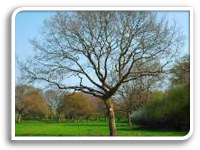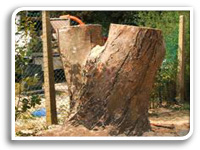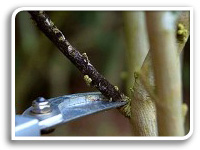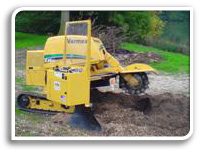Services
Crown Reduction
The ends of all branches are reduced, in length, back to suitable ‘growth points’ (side branches). As a result the entire tree crown is reduced, in size and volume, whilst retaining the natural shape of the species. This procedure is usually stipulated in terms of a percentage (rarely more than 30%).
Crown Thinning

Branches are removed from within the tree crown in order to make it uniformly less dense. The natural shape of the tree is completely unaffected but the ‘Sail Effect’ (wind resistance) is reduced and more light allowed to filter through. This procedure is usually stipulated in terms of a percentage (rarely more than 30%)
Crown Lifting
Increasing the gap between ground level and the crown. This is normally achieved by removing the lowest branches, of the crown, to a specified height.
Felling:
Causing a tree to fall under control by carefully making a series of cuts at the base of the trunk.
Sectional Felling:

Carefully dismantling a tree in small sections. This operation is usually undertaken using heavy duty rigging equipment, lowering ropes and skilled branch removal techniques.
Hedge Cutting:
Hedges of any size can be topped and trimmed to your specific dimensions.
Formative Pruning:

The formation of a healthy stem and branch framework in very young trees. Achieved by carefully selecting and removing diseased wood, congested and rubbing branches and weak branch unions. Correct formative pruning can dramatically reduce the chances of disease, structural weakness and branch failure as the tree matures.
Hedge Laying:
Over time hedges deteriorate, especially if they are neglected. With a very poor hedge it may be necessary to coppice the stems or grub it out and replant.
Where growth is good but thinning near the base, laying will rejuvenate a hedge by encouraging new growth. Hawthorn is the best species for laying but most of the common deciduous hedge shrubs such as ash, blackthorn, elm, field maple and hazel are also suitable.
Hedge laying is undertaken in winter. Stems larger than about 20cm (8in), awkwardly-shaped or out of line should be removed. Side growth is cut away from the lower stems and debris cleared from the bottom of the hedge. Properly trimmed a well laid hedge may last 50 years or more before it starts to thin at the base.
Stump Grinding:

Tree stump grinding provides the most efficient form of stump removal.
With minimum disturbance we can grind the tree stump down to approximately 8" below the surface which is an adequate depth for laying a lawn or concreting over.
The tree stump is ground down to wood chips which can be used as mulch around the garden.
It is not possible to remove all of the roots from the tree as they can cover such a large area. When we remove the tree stump from your property the root system will start to die away if it hasn’t done so already.
Tree Pollarding:
Pollarding is when the head of main branches is cut back to promote a more bushy growth of foliage to prevent them outgrowing their allotted space, casting shade, obstructing electric wires and streetlights or blocking gutters.
Pollards are identified by the numerous branches, originating at the same point on the tree.
These shoots have emerged from dormant buds under the bark.
The best time for pollarding many trees is in late winter or early spring when food reserves are high and the tree is not under water stress.
Pollarding is best started on young trees as young wood responds rapidly to wounding reducing the risk of decay.
Once pollarded it is important to continue the cycle of cutting. Although having a tree pollarded regularly may be expensive, a lapsed pollard tree may require future surgery removing larger parts of the tree at a greater height.
Lapsed Pollards:
Neglected pollards could lead to large trees that can cause a nuisance.
It may be desirable to bring trees back into regular pruning to restrict their size.
In some cases a tree can be cut back to the original pollard head.
Another option suited to some trees is to carry out crown reduction and thinning to reduce the weight of the crown instead of returning to a cycle of pollarding. The tree can then be monitored for any further maintenance as it is required.
Cable Bracing:
We use the non-invasive “Cobra” bracing system.
Cable bracing is used to support structurally weak trees that are susceptible to damage from winds, storms, or even the weight of their own foliage.
This support technique uses hardware to make the tree more structurally stable.
When is Cable Bracing Required?
- Weak or Structurally Suspect Crotches in Tree.
- The Appearance of a Crack at or Just Below a Crotch.
- Tight "V" Crotch with Included Bark.
- A Split at a Primary Trunk Crotch.
- Multi-Stem Trees with Suspect Crotches.
- Trees with Heavy Foliage.
- Stress Damage from Wind, Weight of Snow, Rain, or Ice.
It is worth remembering however, that the need for procedures such as this, is greatly reduced through early tree inspections and 'formative' pruning.